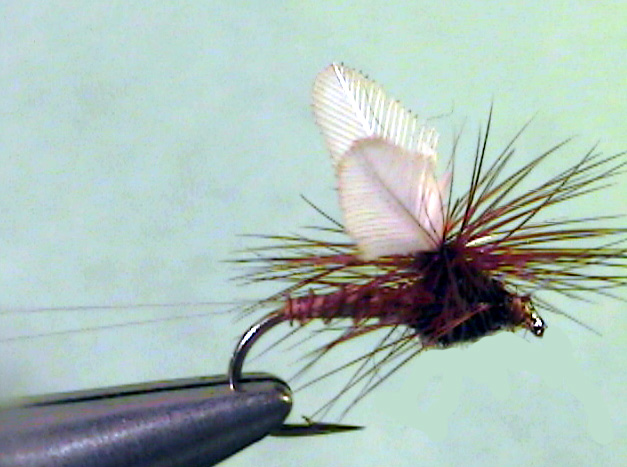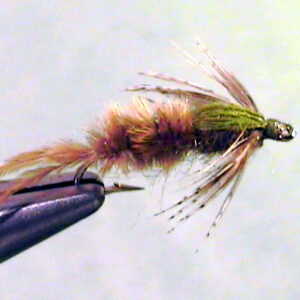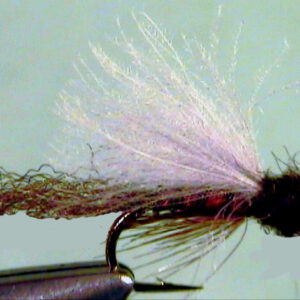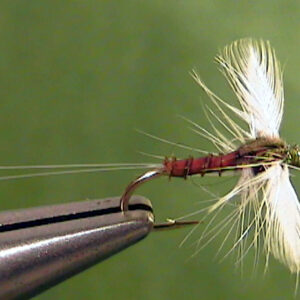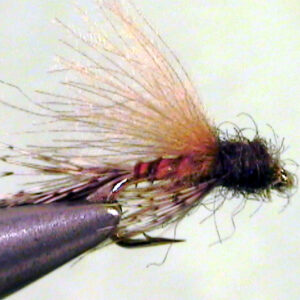Hook Size: 12/14/16
This is the Speckled Wing Quill dun. It imitates the newly emerged insects as it floats on the surface during the hatch. The Speckled Winged Quills are often called “Callibaetis“, which is the scientific name of the genus these mayflies belong too. They are found in slow moving water of streams and still water of lakes and ponds. Trout eat them in all stages of their life. A must for still water anglers.
Since the duns fly away very quickly, especially or bright, clear days, fishing the dry fly
may not be very effective. Colder, cooler days may cause the duns to stay on the surface
for a few more seconds than normal. Many times, it is more effective to continue to fish
an emerger pattern or a nymph pattern than the dun imitation.
Presentation:
The dun imitation should be cast on as long of a leader and as light of a tippet as you
can possibly cast it. Hopefully, you will cast it in front of a feeding trout. In lakes and slow
moving streams where you can see the fish taking the fly you should only cast when you
are casting to a trout. Usually blind casting is not very productive but it is sometimes
necessary depending on the water. In still waters, casting to cruising trout commonly
called “gulpers” takes some skill. You must cast ahead of the trout the correct distance
for the trout to see and eat the fly but not to where you alert it of you or your fly lines
presence. This takes some practice but is the most effective way to dry fly fish for the
“gulpers”.
Copyright 2013 James Marsh
